For a while, my wife and I have aspired to become urban semi-homesteaders, and one day produce a meaningful fraction of the fruits and vegetables we consume. We got a huge head start last fall, after buying a house that essentially had a micro-scale farm in place of a backyard. When we moved in, most of the space was occupied by raised beds, mulch, and fall crops still thriving despite some neglect while the house changed hands. It wasn’t until mid-winter that we needed to start purchasing produce in earnest again.
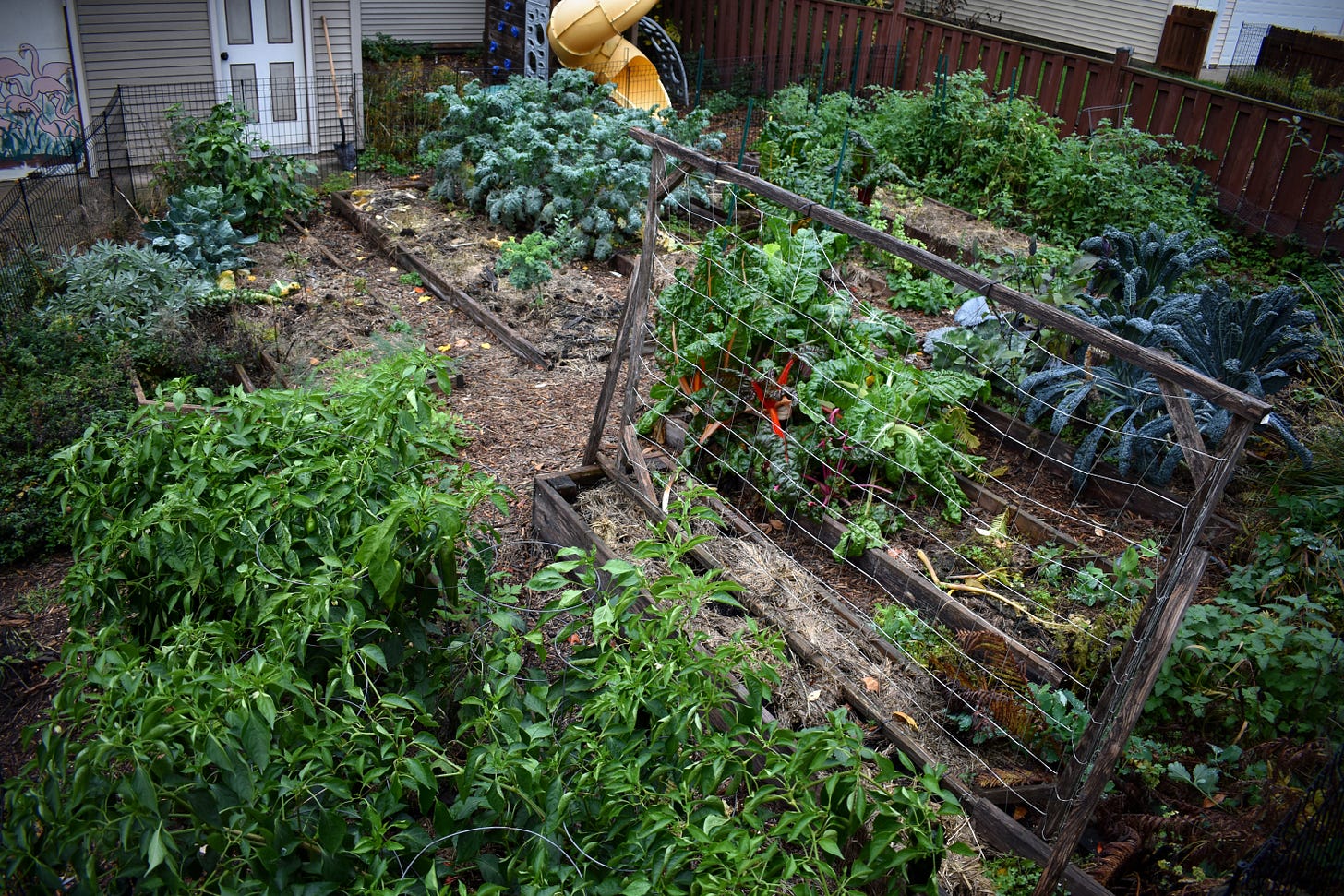
We liked a lot of this arrangement, and we’ve been lucky to benefit from all the work the previous owners put in. But we also wanted to make two big changes.
The first was to shift away from intensive vegetable production—an approach that would likely require more time and attention than we could give—towards more of an “edible forest garden.” As I wrote last year, the goal here is to harness more of nature’s water, nutrient, and pest management cycles, and thereby produce a comparable amount of food with less effort. The forest garden premise is that we can create a baby backyard ecosystem that replicates some of the functioning of a natural forest, with canopy, understory and groundcover layers, as well as enough biodiversity to keep pests in check.
Our second goal is to create a bit more space for humans. In the raised-bed version of the yard, it’s great to walk among a bounty of produce during peak harvest season, but at other times of year, we’d prefer a look with less mulch. We’d also love some more space to sit and hang out.
Our vision is that one day this space might be a small backyard woodlet that keeps us supplied with fruit, vegetables, herbs and flowers—one big enough to sit at a firepit in the center and forget, if you try, that you’re in the middle of a city.
Here at the end of the growing season, I think we’ve made substantial progress towards that vision. Look out our window right now, though, and you’ll likely see a lot in flux and a little chaos.
The plan this year was to do lots of spring planting and then let things run wild while I was traveling internationally for two months. For better or worse, that’s what happened. I also made plenty of mistakes, some of them comically obvious with the benefit of hindsight. Ultimately we are still beginners here, and I’ll try not to pretend otherwise. So here’s where things stand one growing season into this transition.
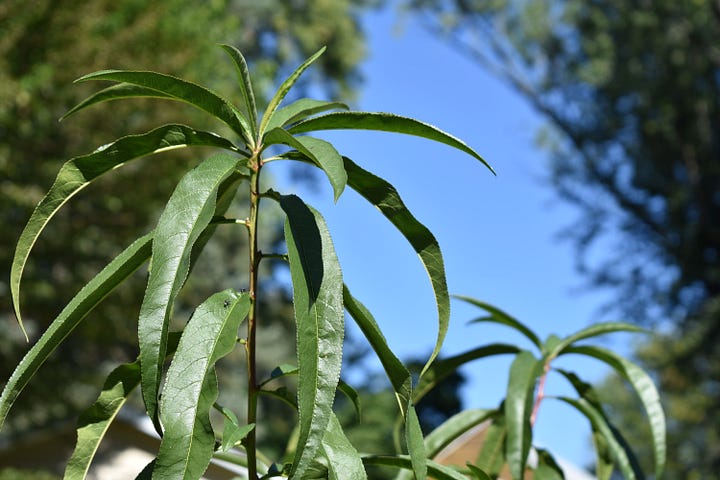
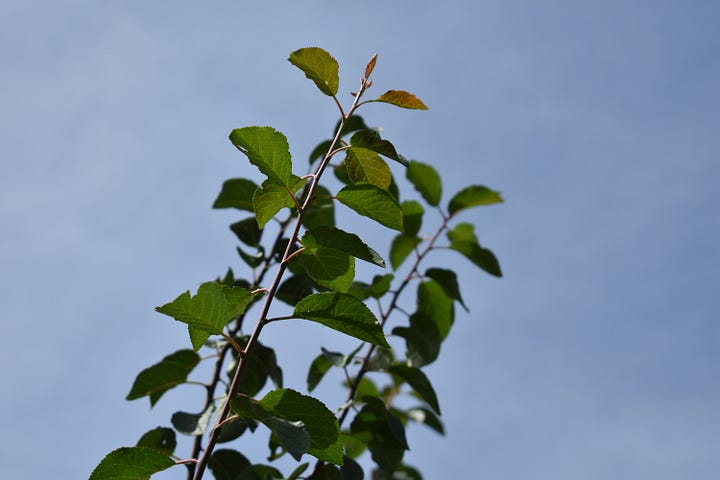
Our yard is surrounded by a canopy of towering pines and maples. Because these trees don’t shade us much, we were able to plant a half-dozen small fruit trees to begin building our forest garden “canopy” layer, many of them on dwarf rootstock that won’t grow taller than 15 feet or so. Once they mature, these trees will ideally enclose a large portion of the space—picture them spaced slightly wider than you might find at a you-pick apple orchard. In this first year, a few of them have shot upward: our plum must be at least 8 or 10 feet tall by now. Others have grown only modestly. And one poorly-protected pear tree was mortally wounded by trunk-gnawing animals. Hopefully next year they will all branch out more, giving some relief from the sun that bears down on the open yard right now. And by year three, we’re aiming to have plenty of peaches, plums, and pears.
A cohort of berry bushes and climbing fruit vines are beginning to fill the space below those trees. We were lucky enough to get our first few raspberries towards the end of the summer. Grapes are beginning to climb the sides of our raised deck, and I’m pleasantly surprised at how our maypop, a temperate relative of passionfruit, has taken off. It sprouted about a dozen fruits that hung off the side of our house just outside our living room window. There wasn’t enough warmth left in the year for them to ripen, but now that the plant is established, it seems likely that it’ll fruit earlier in future seasons. The unripe fruit was also good at least for producing seedstock that can be planted along other walls and fencelines next year.
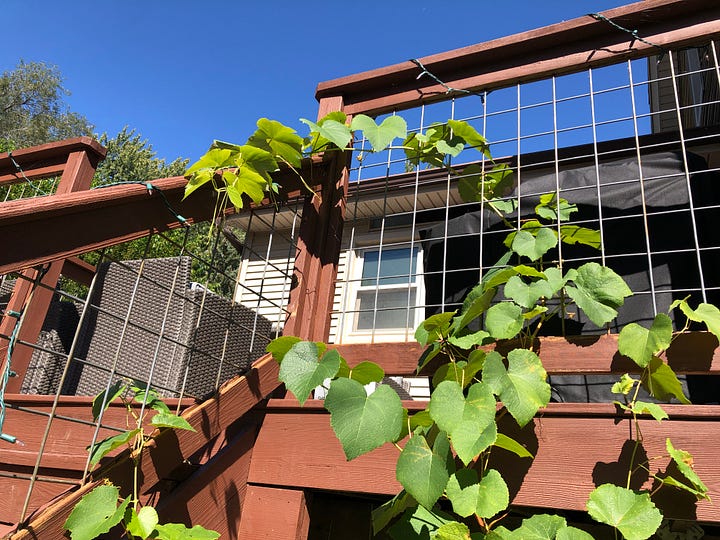
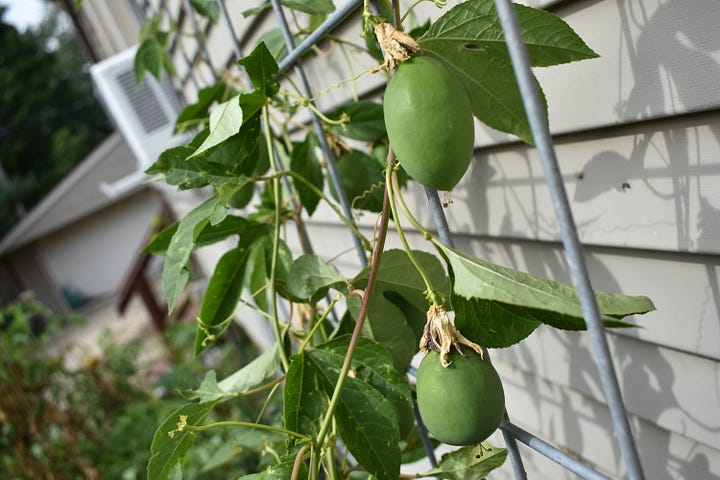
On the ground, things are a little disorderly. The wood mulch present when we moved in seemed to suppress weed growth pretty well for the previous owners, but we’d love a greener look. I’ve been hunting for some secondhand stones to create more permanent pathways with. And where we don’t walk regularly, we’re aiming to transition to a blanket of living mulch groundcover species that can crowd out weeds the same way woodchips do. We planted some of these in the spring: a set of young strawberries, plus some species I hadn’t previously heard of but found at a local sale, like nitrogen-fixing New Jersey tea and raspberry-cousin thimbleberry.
These did not fare great under the let-weeds-run-wild approach, and will need more help next year. On the other hand, we had some extra tomato starts towards the end of the spring, and I haphazardly threw them in the ground wherever there was space. They spread across much of the yard in a dense mat, allowing us to have effectively limitless tomatoes all summer with near-zero effort.

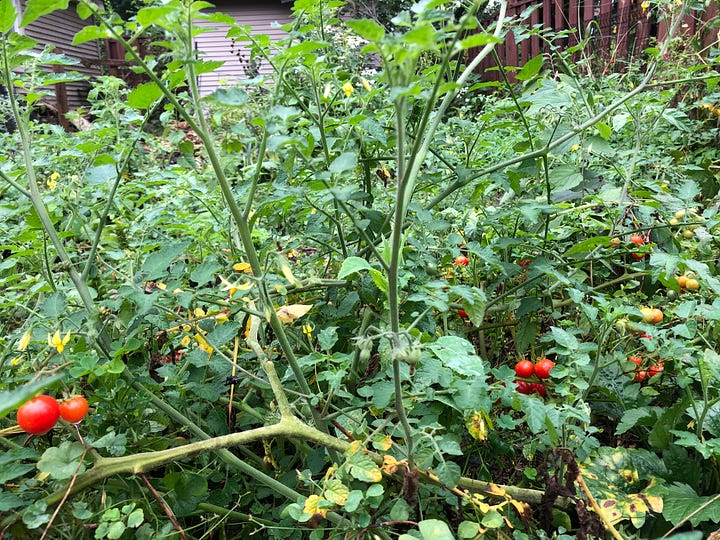
Our focus on getting new perennials in ground left less energy for annual flowers and other vegetables. But we did still manage some of both: lots of kale that survived from last year after a mild Wisconsin winter; some “mango melons,” basically cantaloupes the size of a clementine; volunteer sunflowers that sprung up and grew to well above our head; and a couple watermelons almost too big to fit into our fridge.
Next year, we’ll keep working on getting the trees and vines established, and perhaps add a couple more. A more pressing next step, though, is some attention to the range of “ecosystem services” that these plants will need to thrive. That means more nitrogen-fixing shrubs and groundcovers to help build soil fertility, more plants to attract beneficial insects, and some “aromatic pest confusers” like garlic and marigold to deter squirrels and rabbits. Perhaps we’ll also have more time for annual vegetables and flowers. I just got done planting some tulip bulbs that will overwinter, so our first planting for 2025 is officially in the ground.
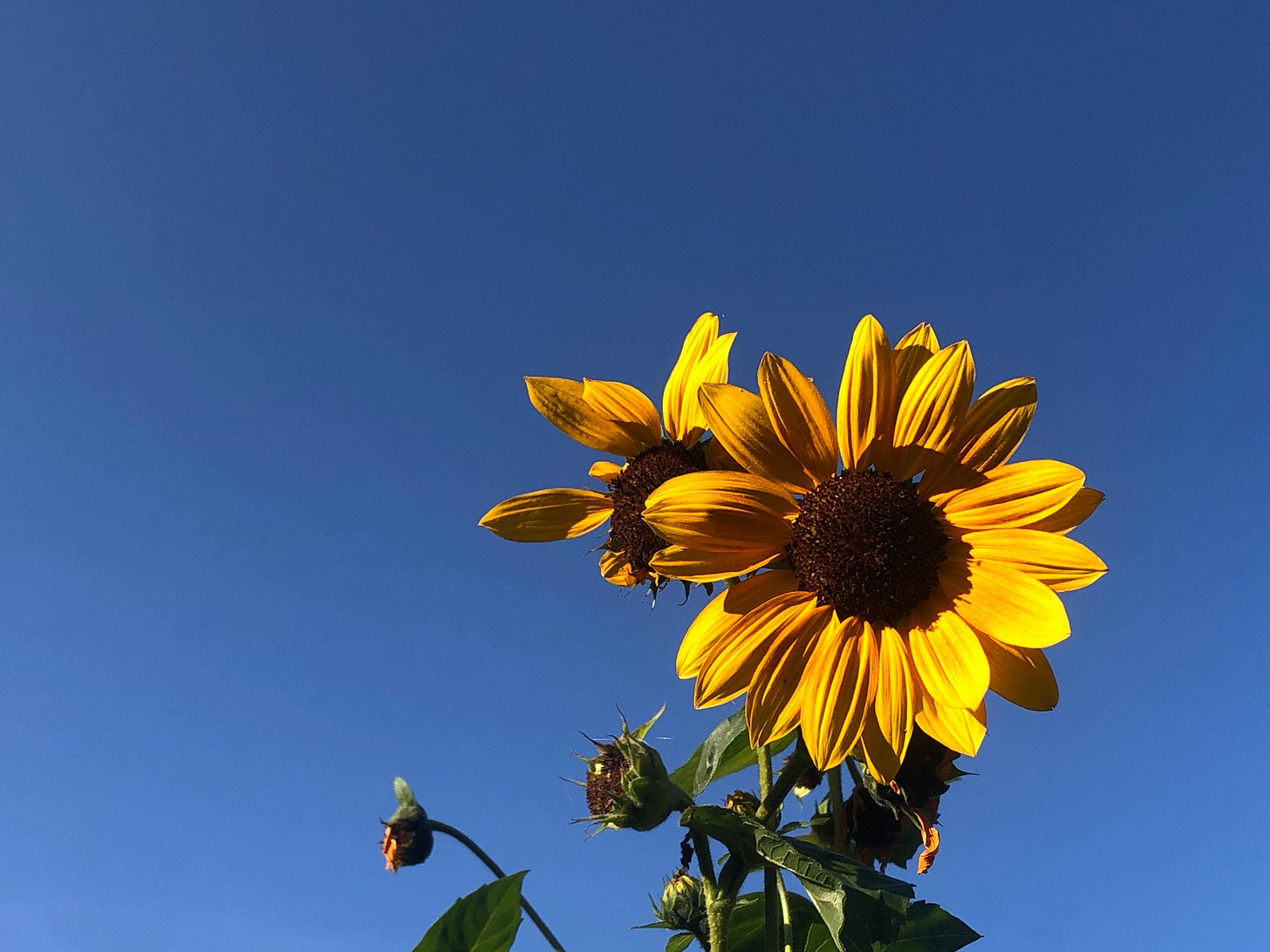




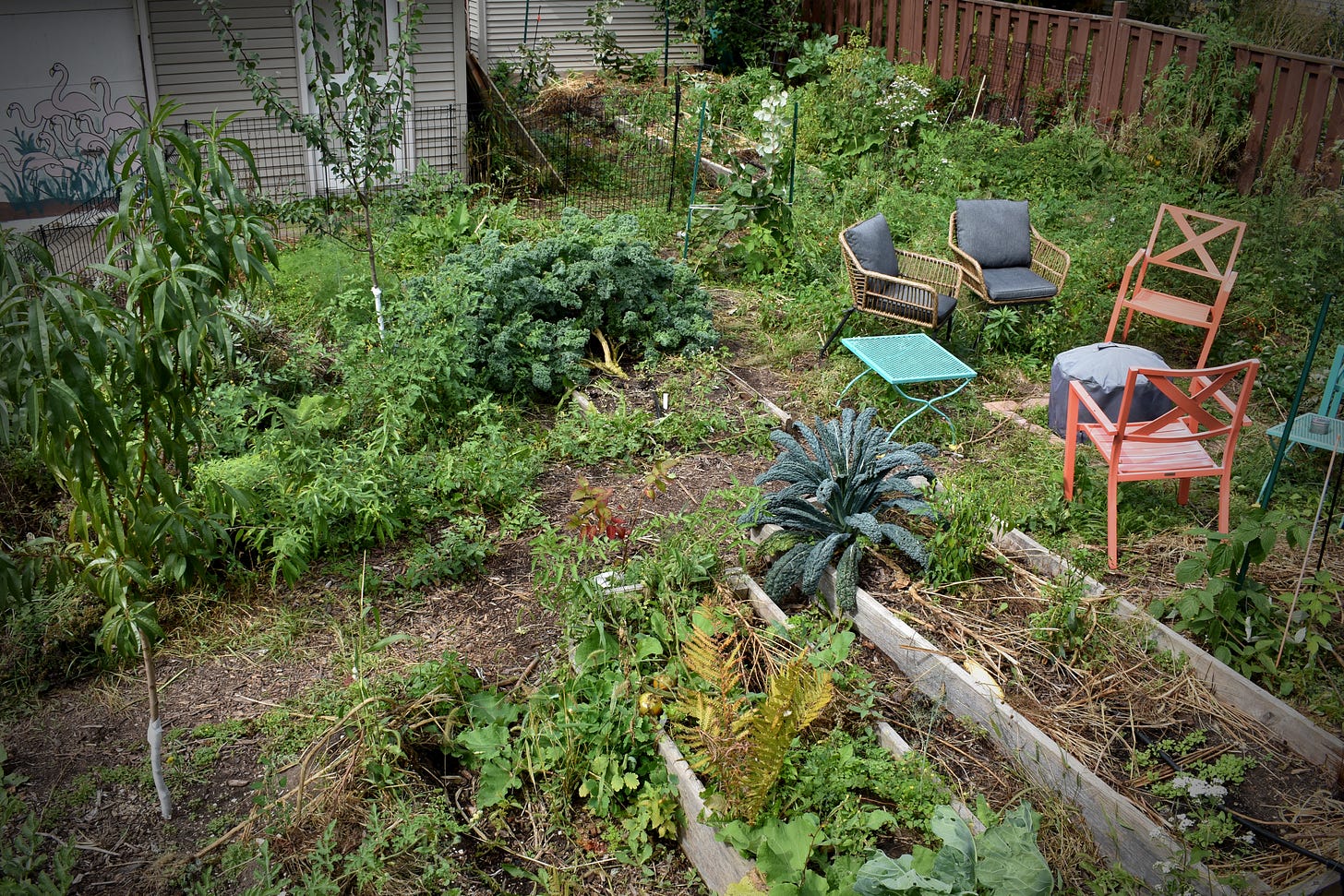
I love this post, Chris. It’s comforting — trial and error, acknowledging mistakes and maintaining a sense of humor — all in all, a wise way to go through life in general. Bravo! My favorite part? Let the weeds run wild!